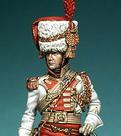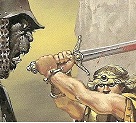loki100
Posts: 10920
Joined: 10/20/2012
From: Utlima Thule
Status: offline

|
quote:
ORIGINAL: jamesm
...
Apart from my question I have been thinking what changes they might need to do from War in the West. The air war model may need to be changed or adapted because strategic bombing from my research hardly played a role on the Eastern front (maybe part from early on and the bombing raids on the Romanian oil fields and some German air raids on Russian Cities), while in WitW it is a very important factor in the air war.
Also the number of administrative points may have to be changed (if the same point cost system is used in WitW) is to reflect the need to constantly create airfields and depots due to the ebb and flow of the front lines.
I've been playing a fair bit of WiTW and one thing I've been thinking over is how much/how well does it translate. A key constraint is that even in the France 1944 phase of the war, land combat is small scale compared to the Soviet-German part of WW2.
But its clear that WiTW is the iteration to the system that will end up (possibly, maybe) as WiE so it will affect WiTE2.
I don't think the air war is an issue. Once you get used to it, its a lot more elegant and you can do all that you do in WiTE now (hit the enemy airforce, pre-combat attacks, close combat support etc), just with a lot less micro organisation. I can't see either side in WiTE generating the levels of air interdiction the Western Allies can ... at least not to the very end of the war when Soviet airpower is just another factor battering down the last German defences.
Few other rules worth thinking about.
Concept of combat delay is really good, starts to add some sort of elapsed time concept to the game, but clearly hinders an attacking player. Nothing wrong in that, but there is an issue of game balance that needs to be sorted out ... as in my comment above, so far WiTW has nothing akin to either the German 1941 offensives or the Soviet late war attacks.
Supply system has 3 parts and its elegant, but again will need a lot of care in implementation. You have the challenge of getting supply to a region (and if you use your rails for troop movements you can't shift supply and vice-versa). You use depots to create a supply stock in a given region ... key issues here are the ability to deliver supply to that area and the capacity of the depots. You then, within a given region, set troop priority to draw off that supply.
Oh and you lose cv at a rate of 1% for every 1% missing ammo, so lack of full supply is a real constraint.
All of this takes a huge nerf bat to the current logistics problems in WiTE. There is a real feeling of having to pause to let supplies build up and small scale attacks *because you can* may be pretty silly, you are burning off scarce ammo and fuel that you may want for a real attack later on.
edit - this also makes sense of the Soviet attacks post-Smolensk in late 1941. By making the Germans fight, they stopped/slowed the build up of supplies for Typhoon. So losing attacks, if you are the supply rich side, can be quite effective. It may also mean that players tend to look to end an offensive in good defensible terrain (ie behind a river), simply to deny their opponent the capacity to do this sort of attack.
Done right, it will bring in the pauses that are such a feature of the Soviet-German war.
Some other issues - I find that WiTW plays more slowly, there are a lot more fractional rules (ammo/cv; rail cap) and so on, compared the binary rules in WiTE at the moment. With WiTW this is no big deal, even by late 1944 neither side has a big army, but it does mean that WiTW brought east has significant computer processing challenges. Also movement point costs are more nuanced, in particular with the importance of varying air interdiction levels.
< Message edited by loki100 -- 9/24/2015 10:07:07 PM >
_____________________________
|
 Printable Version
Printable Version














 New Messages
New Messages No New Messages
No New Messages Hot Topic w/ New Messages
Hot Topic w/ New Messages Hot Topic w/o New Messages
Hot Topic w/o New Messages Locked w/ New Messages
Locked w/ New Messages Locked w/o New Messages
Locked w/o New Messages Post New Thread
Post New Thread